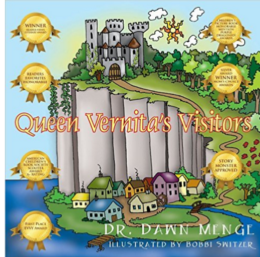Notes from Jacquie: This is a part of the on-going series What Works in Education. In this post I will highlight the groundbreaking work of Dr. David Johnson and Dr. Roger Johnson in the area of cooperative learning.
I was honored to receive my training in cooperative learning from the Drs Johnson and later became a trainer of their application of social interaction theory to the classroom.
All of the curriculum I have written is influenced by the Johnson's research and common-sense approach to teaching.
The successful history of cooperative Learning is well documented and is currently "Alive and well." in both the U. S. and around the world. For an update please visit
The Cooperative Learning Institute

The perception, often times, is that cooperative learning is simply putting students into groups. The reality is that it is much for complex. In the article What is Cooperative Learning? the Johnson's state:
How teachers structure student-student interaction patterns has a lot to say about how well students learn, how they feel about school and the teacher, how they feel about each other, and how much self-esteem they have.
Rather than write many pages on how to set up a cooperative classroom, I have included several YouTube videos in which the Johnson's speak for themselves in a way I never could. I also refer you to An Overview of Cooperative Learning by David and Roger Johnson.
In my first book, Simple Cooperation in the Classroom (Published in 1985 and is now out of print), my co-author and I included the following in the preface:
During the last decade educators have been concerned because we see many of our students graduating from school without the necessary skills to succeed in the world. In many instances students have few, if any marketable skills. In addition, after obtaining employment, many lose their jobs because they are unable to communicate clearly and "get along" with other people.
There are many successful practices, some of which have been highlighted on this blog, yet we hear the above mentioned frustration being voiced by educators today. The solutions being suggested are draft new laws & new rules, add new credential requirements, figure out new ways to evaluate teachers, develop new standards and on and on.
I often say the obvious escapes me. Looking at our test scores, perhaps those in charge of education should adopt the phrase as their mantra.
He Who Teaches Learns Twice is a phrase often repeated in workshops and interviews conducted by Dr Roger Johnson. It is included in the this
video interview.
Dr. David Johnson adds to the discussion
Selected books written by Drs. David and Roger Johnson are available in the Cooperative Learning Section of http:/astore.amazon.com/jacsblo09-20 Jacquie's Book Store and Amazon.com
I was honored to receive my training in cooperative learning from the Drs Johnson and later became a trainer of their application of social interaction theory to the classroom.
All of the curriculum I have written is influenced by the Johnson's research and common-sense approach to teaching.
The successful history of cooperative Learning is well documented and is currently "Alive and well." in both the U. S. and around the world. For an update please visit
The Cooperative Learning Institute

The perception, often times, is that cooperative learning is simply putting students into groups. The reality is that it is much for complex. In the article What is Cooperative Learning? the Johnson's state:
How teachers structure student-student interaction patterns has a lot to say about how well students learn, how they feel about school and the teacher, how they feel about each other, and how much self-esteem they have.
Rather than write many pages on how to set up a cooperative classroom, I have included several YouTube videos in which the Johnson's speak for themselves in a way I never could. I also refer you to An Overview of Cooperative Learning by David and Roger Johnson.
In my first book, Simple Cooperation in the Classroom (Published in 1985 and is now out of print), my co-author and I included the following in the preface:
During the last decade educators have been concerned because we see many of our students graduating from school without the necessary skills to succeed in the world. In many instances students have few, if any marketable skills. In addition, after obtaining employment, many lose their jobs because they are unable to communicate clearly and "get along" with other people.
There are many successful practices, some of which have been highlighted on this blog, yet we hear the above mentioned frustration being voiced by educators today. The solutions being suggested are draft new laws & new rules, add new credential requirements, figure out new ways to evaluate teachers, develop new standards and on and on.
I often say the obvious escapes me. Looking at our test scores, perhaps those in charge of education should adopt the phrase as their mantra.
He Who Teaches Learns Twice is a phrase often repeated in workshops and interviews conducted by Dr Roger Johnson. It is included in the this
video interview.
Dr. David Johnson adds to the discussion
Selected books written by Drs. David and Roger Johnson are available in the Cooperative Learning Section of http:/astore.amazon.com/jacsblo09-20 Jacquie's Book Store and Amazon.com


































